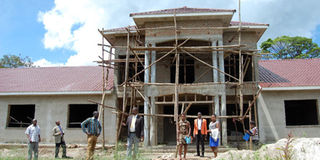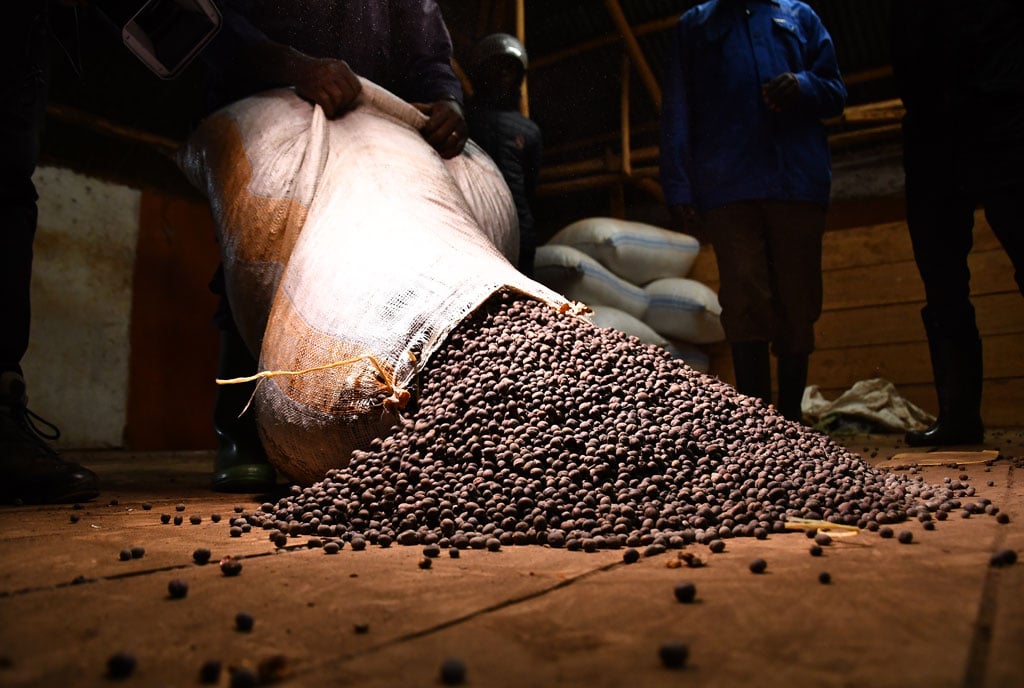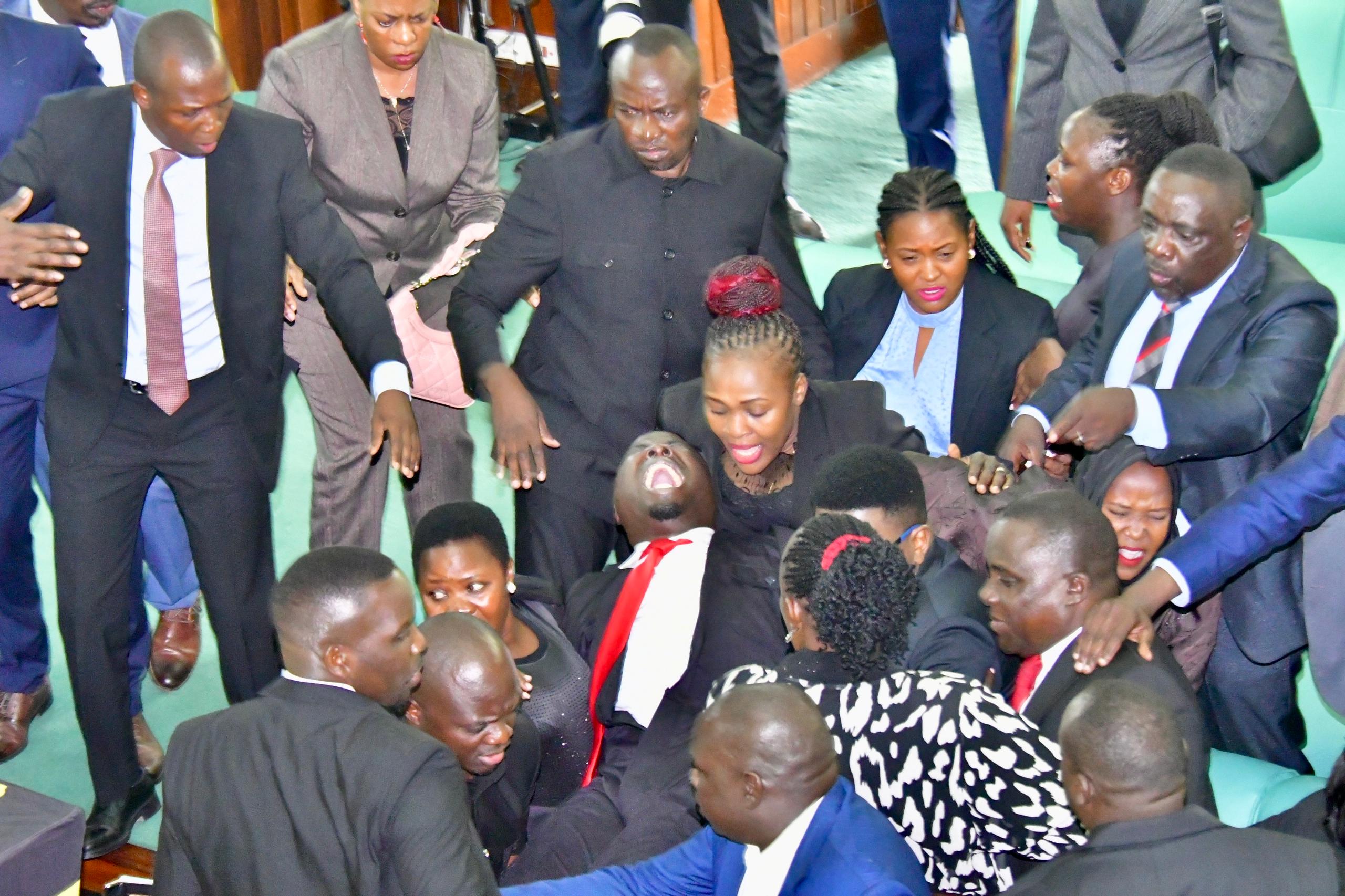Prime
Bunyangabu struggles with lean purse, staff

Promising. The Bunyangabu District administration block under construction. PHOTO BY ALEX ASHABA
What you need to know:
- Bunyangabu is bordered by Kabarole District to the north, Kamwenge District to the east, Kasese District to the south and Bundibugyo District to the west. Kibiito Town is the political and administrative centre of the district while Rwimi (population 16,256) is the largest and main commercial centre.
- Administration. The district has seven sub-counties, five town councils and one constituency.
Leadership. The district is represented by two members of Parliament; Ms Peace Mutuuzo (Woman MP), who is the State minister for Gender and Culture, and Mr Adolf Mwesige, the minister for Defence.
BUNYANGABU. Carved out of Kabarole District and following Parliament approval in 2015, Bunyangabu District became operational on July 1, 2017.
Its creation was highly welcomed by both local leaders and residents who were optimistic that better services such as infrastructure and production would be improved.
One year later, the Bunyangabu District chairperson, Mr James Ategeka, says the district has registered great achievements amid challenges.
In the 2017/2018 budget of Shs13 billion, he says focus was put on the education sector, which was allocated Shs7b, followed by health at Shs1.5b and roads, Shs994m.
He says the three were considered key sectors in the development of the district.
He says the district has managed to construct infrastructure such as Katugunda Polytechnic Technical School at Shs263.4m, two classroom blocks at Kyamuhemba Primary School at Shs73.8m and the district administration block, whose Shs668.5m first phase is nearing completion.
“We hope in years to come, we shall improve the education sector,” Mr Ategeka says. The district recently received a road equipment unit and Shs681.8 million from Uganda Road Fund. Already, 95.6km murram roads in the district have been opened.
The roads include Kasuganyanja-Kadindimo (5.7km), Kismoro-Kyembaire Rwemiyaga (9.2 km), Kisomoro-Bunaiga (3.5 km), Buheesi-Mitandi-Kinyankende (10.2km), Buheesi-Kabota (18km) and Buheesi-Kabahango-Mahoma (6km).
The roads have increased access to different villages and also eased transportation of goods to markets, especially agricultural produce such as matooke and Irish potatoes.
According to Ms Agnes Busige, a resident of Nsongya Zone, many roads have been opened up in different sub-counties.
“When we were still under Kabarole District, some of our roads were impassable, especially during rainy seasons, which was a big problem but today most of our roads have been worked on and we are able to access markets,” she says.
The district has built Kasunganyanja banana loading bay, Nyamiseke, Rwimi Matooke markets and maize milling plant to allow farmers engage more in agriculture to increase production in the district.
Residents have also benefited from different government programmes such as Operation Wealth Creation (OWC), Uganda Women Entrepreneurship (UWEP) and Youth Livelihood (YLP) where many groups have been selected and supported.
In the first year of operation, 16 groups have been approved and nine of them have been supported with Shs73.3m of which seven are under YLP, two (skills development) while the seven groups will receive funds under this financial year.
The chief administrative officer, Mr Peter Ruhweeza, says many farmers have been supported with various farm inputs under OWC such as goats, coffee, pigs, and maize.
“We received 100 goats, 68 piglets, 43 heifers, 1,112,890 coffee seedlings, 10,000kg of maize seeds, 10,000 seedlings of apples among others to help people eradicate poverty,” Mr Ruhweeza says.
However, the district production officer, Ms Yusta Asiimwe, says some inputs such as maize seeds were received.
“In one year of our operations, we have received various inputs from government those that were delivered in time are doing well,” she says.
Ms Elizabeth Night,a resident of Kadindimo Village in Rwimi Sub-county, says since July last year, power lines and gravity water have been extended in various parts of the district.
“For the first time in our village, many people are now using electricity in their businesses and homesteads unlike when we were still under Kabarole District. We used to get water from Nsongya swamp and it was contaminated. Today, we use tap water,” Ms Night says.
The district extended water gravity flow to Buheesi at Shs297.4m and also in the areas of Yerya at Shs49.8m.
According to the online water atlas 2018, the accessibility of water in Bunyangabu District is at 72 per cent.
The district has more than 700 domestic water points, which serve 171,293 people.
Challenges
Mr James Ategeka, said though Bunyangabu has registered great success so far, the district has also encountered some challenges such as staff shortages, especially in education and health departments.
He said the district had only two people running the education department; the district education officer, and district inspector of schools.
In the health department, he said the major challenges, include lack of staff accommodation, general ward and mortuary at Kibiito Health Centre IV, maternity ward at Kabonero Health Centre III and Ambulance to coordinate emergency medical services in the district.
In the financial year 2017/18 the district collected Shs52.9m against the Shs361 million local revenue.
How are districts created?
Factors. Under the Constitution, new districts can be created on the basis of the necessity for effective administration and the need to bring services closer to people.
Other considerations that are usually taken into account in the creation of new districts include the means of communication, geographical features, and population density, economic viability, and the wishes of the people.




